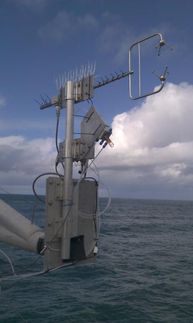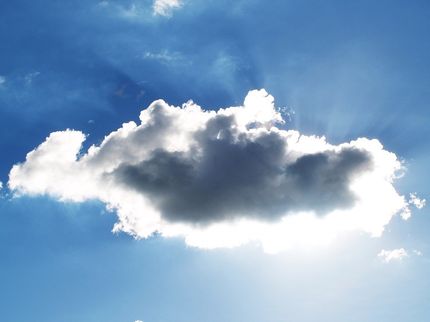NOAA study shows nitrous oxide now top ozone-depleting emission
Nitrous oxide has now become the largest ozone-depleting substance emitted through human activities, and is expected to remain the largest throughout the 21st century, NOAA scientists say in a new study.
For the first time, this study has evaluated nitrous oxide emissions from human activities in terms of their potential impact on Earth's ozone layer. As chlorofluorocarbons (CFCs), which have been phased out by international agreement, ebb in the atmosphere, nitrous oxide will remain a significant ozone-destroyer, the study found. Today, nitrous oxide emissions from human activities are more than twice as high as the next leading ozone-depleting gas.
Nitrous oxide is emitted from natural sources and as a byproduct of agricultural fertilization and other industrial processes. Calculating the effect on the ozone layer now and in the future, NOAA researchers found that emissions of nitrous oxide from human activities erode the ozone layer and will continue to do so for many decades.
The study, authored by A.R. Ravishankara, J.S. Daniel and Robert W. Portmann of the NOAA Earth System Research Laboratory (ESRL) chemical sciences division, appears online in the journal Science. ESRL tracks the thickness of the ozone layer, as well as the burden of ozone-depleting compounds in the atmosphere. It maintains a large portion of the world air sampling and measurement network. NOAA scientists also conduct fundamental studies of the atmosphere and atmospheric processes to improve understanding of ozone depletion and of the potential for recovery the ozone layer.
"The dramatic reduction in CFCs over the last 20 years is an environmental success story. But manmade nitrous oxide is now the elephant in the room among ozone-depleting substances," said Ravishankara, lead author of the study and director of the ESRL Chemical Sciences Division in Boulder, Colo.
The ozone layer serves to shield plants, animals and people from excessive ultraviolet light from the sun. Thinning of the ozone layer allows more ultraviolet light to reach the Earth's surface where it can damage crops and aquatic life and harm human health.
Though the role of nitrous oxide in ozone depletion has been known for several decades, the new study is the first to explicitly calculate that role using the same measures that have been applied to CFCs, halons and other chlorine- and bromine-containing ozone-depleting substances.
With CFCs and certain other ozone-depleting gases coming in check as a result of the 1987 Montreal Protocol, the international treaty that phased out ozone-destroying compounds, manmade nitrous oxide is becoming an increasingly larger fraction of the emissions of ozone-depleting substances. Nitrous oxide is not regulated by the Montreal Protocol.
Nitrous oxide is also a greenhouse gas, so reducing its emission from manmade sources would be good for both the ozone layer and climate, the scientists said.
In addition to soil fertilization, nitrous oxide is emitted from livestock manure, sewage treatment, combustion and certain other industrial processes. Dentists use it as a sedative (so-called "laughing gas"). In nature, bacteria in soil and the oceans break down nitrogen-containing compounds, releasing nitrous oxide. About one-third of global nitrous oxide emissions are from human activities. Nitrous oxide, like CFCs, is stable when emitted at ground level, but breaks down when it reaches the stratosphere to form other gases, called nitrogen oxides, that trigger ozone-destroying reactions.
Most read news
Other news from the department science

Get the chemical industry in your inbox
By submitting this form you agree that LUMITOS AG will send you the newsletter(s) selected above by email. Your data will not be passed on to third parties. Your data will be stored and processed in accordance with our data protection regulations. LUMITOS may contact you by email for the purpose of advertising or market and opinion surveys. You can revoke your consent at any time without giving reasons to LUMITOS AG, Ernst-Augustin-Str. 2, 12489 Berlin, Germany or by e-mail at revoke@lumitos.com with effect for the future. In addition, each email contains a link to unsubscribe from the corresponding newsletter.


























































